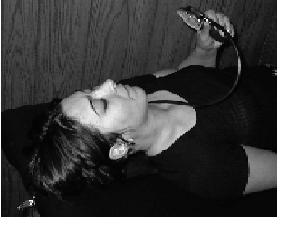Cervical Muscular Retraining
Reference:Jull et al 1999, Further clinical clarification of the muscle dysfunction in cervical headache. Cephalgia 19 (3):179-185
(This is a brief summary taken from the DNF protocol of The Whiplash Physical Diagnostic Clinic, Department of Physiotherapy, University of Queensland)
Details on muscular retraining are in the “Cevical Headache” Video/Book program. For a 30 day free trial option visit the “APTEI Videos” section of this web site.
- It is a highly skilled technique that requires the Physiotherapist to be extremely precise for it o be effective
- Test position in supine with the cervical spine (Cx) in neutral position
- Position the Pressure biofeedback in the sub-occipital region (not mid cervical) and inflate to 20mmHg
- Instruct the patient to nod ?yes? to target 22mmHg and hold the position steadily. If successful, progressively target 24, 26, 28 and to a maximum of 30mmHgCorrect performance:
1) Satisfactory performance is at least 26mmHg holding a steady contraction for 10 by 10 seconds 2) NO superficial muscle activity is present
Poor Performance:
1) Too quick (most common) 2) Overshooting target 3) Phasic contraction of the superficial muscles 4) Patient retracts neck instead of pure UCx flexion
Note: Evaluating and training with a PBU is deemed necessary. Although training without the PBU is possible, it has been clinically shown to not be as effective!
Clinical Relevance: The greater over-activity present in the SCM, UFT, Scaleni and Sub-occipital muscles, the more it indicates poor segmental stability control.
If you are interested in purchasing a pressure biofeedback unit ($175), please contact: 1-866-APTEI-44 or 905-707-0819
Posted on: May 16, 2002
Categories: Cervical Spine


